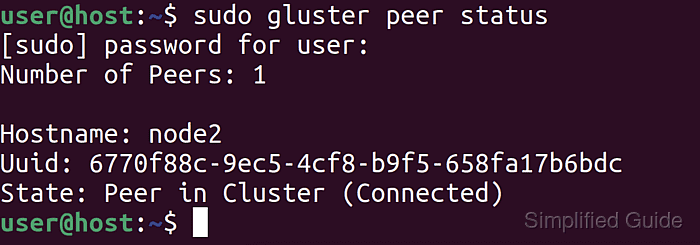GlusterFS is a scalable, distributed filesystem used to manage storage across multiple servers. It enables the creation of a Trusted Storage Pool, a collection of nodes that work together as a single storage entity. Each server in the pool must have GlusterFS installed and properly configured to ensure smooth communication and functionality within the cluster.
Before adding servers to the Trusted Storage Pool, network configuration is essential. Each server must be assigned a static DNS entry to allow consistent and reliable communication. This network setup ensures that nodes recognize each other and are ready for integration into the pool. Proper network connectivity must be confirmed between all servers to guarantee that they can communicate seamlessly.
After setting up the network, each server is added to the Trusted Storage Pool using the gluster command-line tool. This creates a cluster that allows the storage resources from each server to be pooled together. Once the cluster is formed, its status can be checked and monitored from any node within the system to ensure all servers are properly connected.
Steps to set up a trusted storage pool for GlusterFS:
- Install glusterfs on all server nodes.
- Launch terminal.
- Open the /etc/hosts file on all nodes.
$ sudo vi /etc/hosts [sudo] password for user:
- Add static DNS name and alias for all cluster nodes.
#IP Name Alias 192.168.111.70 node1.gluster.local node1 192.168.111.71 node2.gluster.local node2
- Ping each node from all nodes to confirm connectivity.
$ ping -c3 node1 PING node1.gluster.local (192.168.111.70) 56(84) bytes of data. 64 bytes from node1.gluster.local (192.168.111.70): icmp_seq=1 ttl=64 time=0.018 ms 64 bytes from node1.gluster.local (192.168.111.70): icmp_seq=2 ttl=64 time=0.020 ms 64 bytes from node1.gluster.local (192.168.111.70): icmp_seq=3 ttl=64 time=0.035 ms --- node1.gluster.local ping statistics --- 3 packets transmitted, 3 received, 0% packet loss, time 2029ms rtt min/avg/max/mdev = 0.018/0.024/0.035/0.007 ms $ ping -c3 node2.gluster.local PING node2.gluster.local (192.168.111.71) 56(84) bytes of data. 64 bytes from node2.gluster.local (192.168.111.71): icmp_seq=1 ttl=64 time=1.72 ms 64 bytes from node2.gluster.local (192.168.111.71): icmp_seq=2 ttl=64 time=0.626 ms 64 bytes from node2.gluster.local (192.168.111.71): icmp_seq=3 ttl=64 time=0.410 ms --- node2.gluster.local ping statistics --- 3 packets transmitted, 3 received, 0% packet loss, time 2015ms rtt min/avg/max/mdev = 0.410/0.919/1.722/0.574 ms
- Create the Trusted Pool by adding each node to the cluster.
$ sudo gluster peer probe node2 peer probe: success.
- Check the status of the peers from any node.
$ sudo gluster peer status Number of Peers: 1 Hostname: node2 Uuid: 6770f88c-9ec5-4cf8-b9f5-658fa17b6bdc State: Peer in Cluster (Connected)
- Verify the Trusted Pool status from any node.
$ sudo gluster pool list UUID Hostname State 6770f88c-9ec5-4cf8-b9f5-658fa17b6bdc node2 Connected bca7490b-64c2-46d1-ae9a-4577cc03625f localhost Connected

Mohd Shakir Zakaria is a cloud architect with deep roots in software development and open-source advocacy. Certified in AWS, Red Hat, VMware, ITIL, and Linux, he specializes in designing and managing robust cloud and on-premises infrastructures.
Comment anonymously. Login not required.

